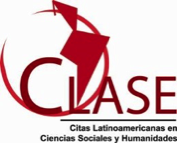Authorship, authenticity and originality reformulated, and their application in contemporary multiple and organic installations
DOI:
https://doi.org/10.30763/intervencion.243.v1n23.22.2021Keywords:
authorship, authenticity, originality, contemporary art conservation, theory, installationsAbstract
Based on the review of writings by theorists and conservators, we propose a reformulation of the concepts of authorship, authenticity and originality, promoting the expansion of meanings and applicable scopes in contemporary art installations, even in those made with organic objects or easily replaceable materials. In such situations, how should we act as conservators in cases where the important thing is the transmission of meaning, not the materiality of the object?
Downloads
References
Alexander, E. (3 de junio de 2011). Lady Gaga: getting political. British Vogue Online. Recuperado de https://www.vogue.co.uk/article/lady-gaga-meat-dress-explanation
Benjamin, W. (1936). The Work of Art in the Age of Mechanical Reproduction in Illuminations. Harry Zohn (trad.). Nueva York: Schocken Books.
Bozal, V. (1989). Modernos y postmodernos. Madrid: Historia.
Buskirk, M. (2003). The Contingent Object Of Contemporary Art. Cambridge, Massachusetts: Massachusetts Institute of Technology Press.
Castriota, B. (2019). Authenticity. En C. I. Sciences, The decision-making Model for Contemporary Art Conservation and Preservation (p. 22). Colonia: Technology, Arts Sciences TH Köln. Recuperado de https://www.sbmk.nl/source/documents/f02_cics_gsm_fp__dmmcacp_190513.pdf
Danto, A. (1997). Introducción: moderno, postmoderno y contemporáneo. En Después del Fin del Arte: El arte contemporáneo y el linde de la historia (pp. 22-45). Barcelona: Paidós.
Danto, A. (2005). Tres cajas de Brillo: cuestiones de estilo. En Estética después del fin del Arte, ensayos sobre Arthur C. Danto (pp. 33-39). Madrid: A. Machado Libros.
De Andrade, O. (2015). Cannibalism Manifesto: Cannibalism is the only thing that unites us. Socially. Economically. Philosophically. En The Feast and Famine de la galería kurimanzutto. Ciudad de México: Press Release Galería kurimanzutto. Recuperado de https://www.kurimanzutto.com/exhibitions/minerva-cuevas#tab:slideshow
Diccionario de la Lengua Española, Real Academia Española. (2021). Auténtico. Recuperado de https://dle.rae.es/aut%C3%A9ntico?m=form
Diccionario de la Lengua Española, Real Academia Española. (2021). Autor. Recuperado de https://dle.rae.es/autor
Diccionario de la Lengua Española, Real Academia Española. (2021). Original. Recuperado de https://dle.rae.es/original
Donaldson, S. (2011). Making Jana Sterback´s Vanitas. (W. A. Center, Ed.) Nueva York: Walker Reader. Recuperado de https://walkerart.org/magazine/making-jana-sterbaks-vanitas
Eco, U. (1998). Obra abierta. Barcelona: Planeta DeAgostini.
Foucault, M. (1998). What is an Author? En Modernity and its Discontents: essential Works of Foucault. 1954-1984. En James L. Marsh, John D. Caputo, and Merold Westphal (Eds.). (pp. 205-222). Nueva York: The New Press.
Gant, M. (2001). Arte, Museos y Nuevas Tecnologías. Gijón: Ediciones Trea S. L.
Goodman, N. (1976). Chapter 3. En Languages of Art: An Approach to a Theory of Symbols (pp. 113-147). Indianápolis: Hackett Publishing.
Heinich, N. ( febrero, 2010). La falsificación como reveladora de la au-tenticidad. Revista de Occidente, 345 . Recuperado de http://www.revistasculturales.com/articulos/97/revista-de-occidente/1243/7/la-falsificacion-como-reveladora-de-la-autenticidad.html
Jadzinska, M. (2012). Back to the Future: Authenticity and its influence on the Conservation of Modern Art. En I. Szemelter (Ed.). Innovative approaches to the Complex Care of Contemporary Art (pp. 82-99). Varsovia: Academy of Fine Arts in Warsaw y Archetype Publications.
Krauss, R. (1981). The originality of the avant-garde: a postmodernist repetition. En After Modernism: Rethinking Representation (pp. 171-175). Nueva York: Museum of Contemporary Art.
Laurenson, P. (2006). www.tate.org.uk. (T. P. 6, Ed.) Recuperado de https://www.tate.org.uk/research/publications/tate-papers/06/authenticity-change-and-loss-conservation-of-time-based-media-installations
LeWitt, S. (1967). Paragraphs of Conceptual Art. Artforum, 5(10), 79-83.
Muñoz-Viñas, S. (2010). The Artwork that Became a Symbol of itself: re-flections on the conservation of modern art. En Theory and practice in the Conservation of modern and Contemporary Art (pp. 9-19). Ed. Ursula Shadler-Saubed et al. Londres: Archetype Publications.
Pes, J. (8 de diciembre de 2019). Maurizio Cattelan’s $120,000 Banana Was Ejected From Art Basel Miami Beach After Drawing Unsafe Crowds (and Getting Eaten). Art net News. Recuperado de https://news.artnet.com/market/cattelan-banana-art-art-basel-1725678
Pye, E. (2001). Caring for the Past: Issues in Conservation for Archaeology and Museums. Londres: James & James.
Vladimirova, M. (2012). What´s the use of the untequited love? Emotions and Eat Art in the Artistic Practice (tesis de doctorado). Linz: Universitat fur kunstlerische und industrielle Gestaltung Kunstuniversitat.
Weyer, C. (2010). Media Art and the Limits of Established Ethics of Restoration. En Theory and Practice in the Conservation of Modern and Con-temporary Art. Reflections on the Roots and the Perspectives (pp. 21-32). Londres: Archetype Publications. Recuperado de http://magazine.art21.org/2010/12/17/gastro-vision-the-best-in-food-art-2010/adriana-lara-banana-peel/
Additional Files
Published
How to Cite
Issue
Section
License
Copyright (c) 2021 Instituto Nacional de Antropología e Historia (INAH)

This work is licensed under a Creative Commons Attribution-NonCommercial 4.0 International License.

Atribución-NoComercial 4.0 Internacional
https://creativecommons.org/licenses/by-nc/4.0/deed.es
Usted es libre de:
- Compartir — copiar y redistribuir el material en cualquier medio o formato
- Adaptar — remezclar, transformar y construir a partir del material
Bajo los siguientes términos:
-
Atribución — Usted debe dar crédito de manera adecuada, brindar un enlace a la licencia, e indicar si se han realizado cambios. Puede hacerlo en cualquier forma razonable, pero no de forma tal que sugiera que usted o su uso tienen el apoyo de la licenciante.
-
No Comercial — Usted no puede hacer uso del material con propósitos comerciales.




















